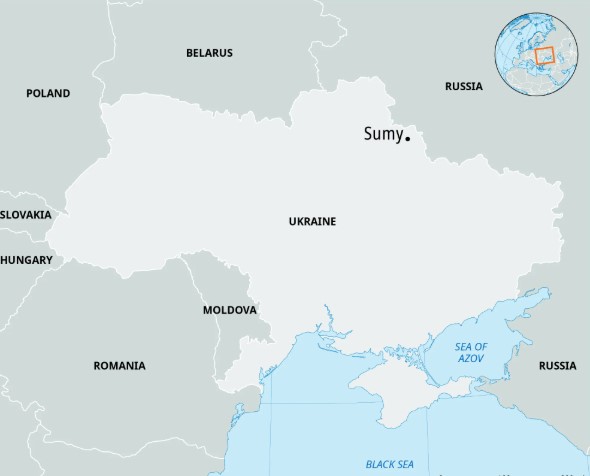Ukrainian President Volodymyr Zelenskyy has confirmed notable progress in the north of the country, where the Armed Forces of Ukraine have liberated six out of 18 occupied villages or strategically important locations in Sumy Oblast.
Liberation in Sumy Oblast, Northern Ukraine
Speaking at a meeting with journalists on 12 August, the president described the development as “good news,” saying the military has also reached the border with the Russian Federation in two separate areas. These gains come after weeks of steady fighting along the northern front line.
Sumy Oblast, located directly on Ukraine’s border with Russia, has been under constant threat since the early days of the war. The region’s proximity to Russian territory makes it a key area for both defense and control of border access points. Over time, many settlements in the region have experienced occupation, artillery fire, and disruption of daily life.
Ukraine destroys Russian radar hub in Kherson amphibious raid
The president’s announcement, reported by Interfax-Ukraine, signals a positive shift in this contested area. With six villages back under Ukrainian control, the number of occupied sites in Sumy Oblast has been reduced from 18 to 12.
Details from the Sumy Oblast frontline
President Zelenskyy revealed that his morning briefing on the situation in Sumy included updates from the Commander of the Air Assault Forces, known by the call sign “Apostol,” and the Commander-in-Chief of the Armed Forces, General Oleksandr Syrskyi. The commanders reported that in addition to the liberated villages, Ukrainian troops had cleared 900 more meters of territory near several points along the border.
Military officials explain that “clearing” or “mopping up” involves removing any remaining enemy forces and securing an area to prevent further attacks. It also includes checking for hidden dangers such as mines or unexploded shells. Troops consider an area safe for both soldiers and civilians only after they complete this process.
Ukraine imposes sanctions on 62 for stealing resources and heritage from occupied lands
Although officials have not disclosed the names of the liberated villages, each location plays a role in the region’s defense network. These villages often function as transport links, observation points, or supply routes. By regaining them, Ukrainian forces improve their control over the surrounding areas and reduce the threat of further incursions.
Over the past few months, Ukrainian forces have made a series of small but steady moves in Sumy Oblast. They have progressed gradually because of the challenging terrain and their efforts to avoid unnecessary losses. Nonetheless, the defenders view the current gains as a significant achievement.
Developments in Other Regions
While the focus has been on Sumy Oblast, Ukrainian forces are also holding their ground in other key regions. In Zaporizhzhia Oblast, located in the south of the country, defense units have maintained their positions despite ongoing attacks. This area is strategically important because of its major transportation routes and energy infrastructure, which have been frequent targets of shelling and missile strikes.
In the east, there has also been movement in Luhansk Oblast, a region largely under enemy control since the start of the conflict. President Zelenskyy reported that Ukrainian troops had advanced by about one kilometer into Russian-held territory in Luhansk. Although the distance may seem small, any forward movement in this heavily fortified region is considered difficult and costly.
Ukraine launches drone attack on Crimea airbase damaging Su jets and weapons storage
Luhansk is one of the most challenging areas for Ukraine’s military operations. The terrain, combined with the presence of strong defensive lines, makes progress slow. Still, the latest advance shows that Ukrainian forces continue to apply pressure on multiple fronts.
The combined achievements in Sumy, Zaporizhzhia, and Luhansk reflect coordinated military efforts across different parts of the country. Each area presents unique challenges — from open farmland and forests in the north, to urban centers and industrial zones in the east, and strategically vital infrastructure in the south.
By making gains in all three regions at the same time, Ukraine’s Armed Forces demonstrate both resilience and tactical coordination. The liberation of the six villages in Sumy, the advances in Luhansk, and the defensive success in Zaporizhzhia together represent a wider pattern of determined defense and targeted offensive actions.
